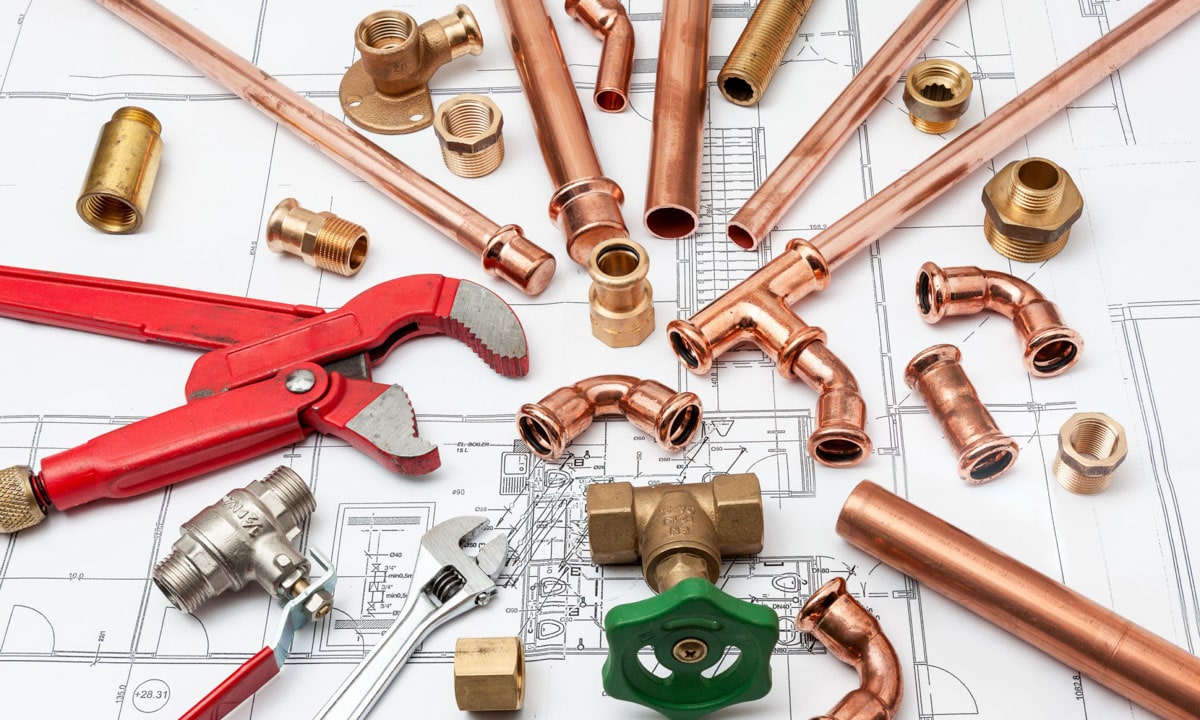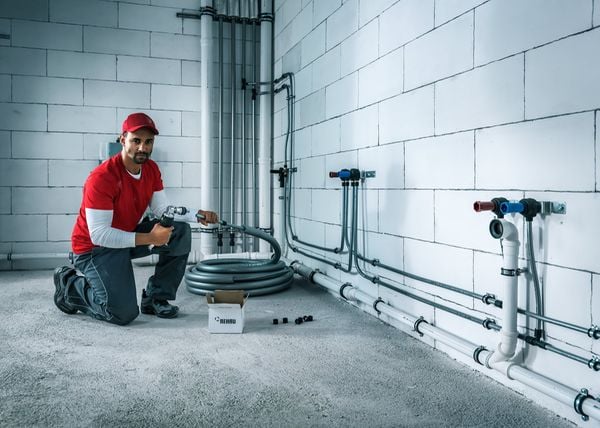Are you trying to locate details about The Future of Plumbing: Trends and Innovations to Watch?

Intro
The plumbing market is going through a transformative phase driven by technological improvements and growing issues for sustainability and efficiency. This write-up discovers arising fads and technologies forming the future of pipes.
Smart Pipes Equipments
Including clever modern technology into plumbing systems makes it possible for remote surveillance, leak discovery, and automated maintenance. Smart sensing units and IoT (Net of Points) devices allow house owners and plumbers to monitor water usage and discover concerns in real-time, leading to extra reliable resource administration and aggressive upkeep.
Water Efficiency Solutions
With enhancing focus on water conservation, ingenious remedies are being created to decrease water wastage in pipes systems. High-efficiency fixtures, greywater recycling systems, and smart watering controllers are amongst the innovations helping customers lower their water footprint while preserving comfort and comfort.
Sustainable Materials
The change in the direction of sustainability encompasses plumbing products, with an expanding choice for eco-friendly alternatives. Naturally degradable piping products, such as PEX (cross-linked polyethylene) and HDPE (high-density polyethylene), deal durability and resistance to deterioration without jeopardizing ecological honesty.
Predictive Upkeep
Anticipating maintenance strategies utilize information analytics and machine learning formulas to anticipate and stop plumbing issues prior to they take place. By assessing historic information and efficiency metrics, predictive maintenance formulas can recognize patterns and abnormalities, making it possible for proactive treatments to avoid costly fixings and interruptions.
Enhanced Truth in Plumbing
Increased Reality (AR) innovation is transforming pipes by giving specialists with real-time aesthetic support for fixing and fixing tasks. AR-enabled smart glasses or mobile applications overlay digital info onto the physical environment, helping plumbers visualize pipeline designs, determine hidden leakages, and perform repair work with precision.
Influence of 3D Printing
The advent of 3D printing has actually presented new opportunities in producing pipes elements. From custom-designed components to elaborate pipeline fittings, 3D printing permits quick prototyping and on-demand manufacturing, lowering preparations and enabling higher modification in plumbing layout.
Health And Wellness Characteristics
In feedback to enhanced problems for health and wellness, plumbing fixtures are integrating features such as antimicrobial surfaces, touchless procedure, and self-cleaning mechanisms. These advancements not only improve hygiene but likewise promote user comfort and convenience.
Hygiene-focused Fixtures
Touchless faucets, self-sanitizing commodes, and antimicrobial surfaces are coming to be significantly prevalent in property and industrial settings, lessening the risk of bacterium transmission and promoting a cleaner, healthier environment.
Water Quality Monitoring
Developments in water top quality monitoring modern technologies enable homeowners to monitor the pureness and safety of their water system in real-time. Smart water high quality sensing units can find impurities, pH degrees, and temperature variations, encouraging customers to take positive actions to make sure water security.
Remote Pipes Services
Remote diagnostics and online assistance are reinventing the method pipes services are supplied. With video conferencing and remote accessibility technologies, plumbers can repair problems, give guidance for do it yourself repair work, and also do remote evaluations, providing better availability and benefit to property owners.
Challenges and Opportunities
While pipes technologies hold tremendous guarantee, they additionally present obstacles such as information personal privacy concerns, governing conformity, and the demand for workforce training. Attending to these difficulties requires cooperation in between sector stakeholders and governing bodies to make certain safe and responsible execution of new modern technologies.
Governing Landscape
Regulatory frameworks play a vital role fit the adoption of plumbing advancements, with criteria and codes governing everything from water effectiveness to item security. As modern technologies continue to develop, regulative bodies must adjust to make certain consumer protection and environmental stewardship.
Future Expectation
The future of pipes is identified by proceeded development and combination with other sectors such as IoT, renewable resource, and building automation. By welcoming sustainable techniques, leveraging arising innovations, and focusing on user-centric style, the pipes sector is positioned to attend to the developing requirements of culture while reducing its environmental impact.
Verdict
To conclude, the future of plumbing is defined by a convergence of modern technology, sustainability, and user-centric design. By embracing clever services, sustainable materials, and aggressive maintenance practices, the pipes sector can enhance effectiveness, promote security, and contribute to an extra sustainable future.
Plumbing Industry Trends You Need To Know
Smart technology in plumbing
Homeowners want to be able to manage their homes from their phones. The technology exists to make that happen. From smart toilets to leak detector devices, the whole plumbing system can be managed on an interconnected network made up of sensors, IoT devices, and machine learning algorithms.
This allows for wireless control to turn appliances on and off, automate routines, and access advanced monitoring to track water usage and flag potential issues. Smart technology streamlines water consumption, maintenance and energy usage, creating a more efficient system.
Green plumbing
The data analysis possible with smart technology not only improves convenience and cost-effectiveness but also fulfills a high-priority customer desire – sustainability. Consumers are very aware of their impact on the planet and want plumbing solutions to reduce damage and support sustainability. Eco-friendly plumbing solutions are already starting to emerge.
Customers can opt for low-flow toilets, water-saving faucets, and connections to sustainable energy sources. Beyond monitoring water consumption, customers can conserve water through the installation of greywater systems. This is a system that collects water that has been used but is still clean enough for some household uses such as toilet flushing.
Shorter product pipeline
To keep up with modern plumbing, plumbers need modern tools that enable them to complete jobs more efficiently. One technology making strides in this area is 3D printing. By 3D printing key plumbing fixtures, plumbers can reduce wait times even for specialized fixtures. It minimizes delays often seen in traditional manufacturing that frustrate customers and prevent plumbers from taking on more work.
Off-site repairs
Augmented reality is making a splash in many industries including plumbing. Plumbers can map a building online so they can explore the plumbing system through augmented reality, identifying areas of maintenance and repair completely digitally. This technology can be applied quite widely in plumbers’ work including planning installations and training new recruits. It’s safer, smarter and more efficient.
Low-footprint materials
Another way for plumbing companies to reduce their environmental footprint and meet the customer demand for sustainability is by using recycled materials in their work. The products they source and manufacture such as pipes, fixtures and faucets can be made from recycled materials. This saves the planet while being just as effective.
Onsite water purification
Additionally, plumbing companies can be advocates of water conservation and ease the financial and environmental concerns of customers by offering water purification systems. New water purification technology such as reverse osmosis systems and UV systems make it possible for homeowners and business owners to thoroughly cleanse water, removing contaminants onsite. This means the water can be safely reused in more ways than greywater can be, establishing a water recycling loop.
Tankless water heaters
Another innovation of modern plumbing is tankless water heaters. The idea is that the water is heated on demand as it runs through the system instead of being heated in a water tank. This is more energy efficient and therefore cost-effective and eco-friendly because water isn’t heated needlessly.

I ran across that article on The Future of Plumbing: Trends and Innovations to Watch while doing a lookup on the internet. In case you enjoyed reading our page kindly be sure to pass it around. Many thanks for taking the time to read it.
Click Here